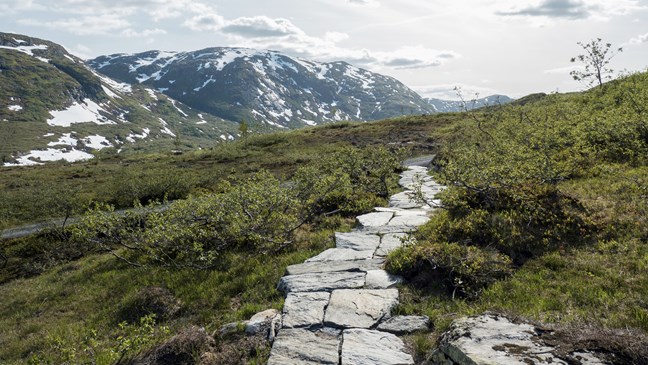Marianne Heier
Torsnesstølen
The wells of Mirage will provide approximately 25,000 people with improved water quality.
- Artist:
- Marianne Heier
- Finished:
- 2016

Mirage is an optical phenomenon in which an object located behind the horizon is visible due to the curvature of the earth and the optical refraction of the atmosphere. Mirage is also an artwork created by Marianne Heier at Gaularfjellet and in Malawi. The artwork consists of ten wells; nine in Malawi and one in Norway. A hand pump designed in Malawi has been attached to each of the ten wells.
The wells in Malawi are located in dry areas where there is a short supply of clean drinking water. The well in Norway is located in the wet Western Norway, at the top of Gaularvassdraget. The watercourse, which was protected in 1993, originates at the Jostefonn glacier in Sogn og Fjordane County and runs into Dalsfjorden; it has a total length of 626 km. The well water now runs into the river Gaula and becomes part of the larger context; the ocean that touches the coasts of both Norway and Africa.
Marianne Heier has collaborated with UNICEF on this project. She invited herself to them, and she has integrated the process of realising the wells and the collaboration with UNICEF as an integral part of the artwork Mirage. The artwork is about distribution and control of natural resourses, colonial history, life quality and the problem of gifts.
The wells of Mirage will provide approximately 25,000 people with improved water quality.
Marianne Heier’s art is created in the conversation and reflection on the artwork. In order for her art to speak to us, it is important to understand the context in which it is created, and to allow ourselves to be invited to join the conversation. Conversations at the water pumps were, and are, an ancient opportunity to exchange information and news. It was a chance to meet fellow men and to have a chat. Marianne Heier reestablishes these opportunities with her project, which is a reflection between Norway and Malawi.
In addition to experiencing the beautiful nature at Gaularfjellet, we are invited to reflect on water as a vital resource, and on how unevenly water is distrbuted throughout the world. Nature can be brutal and violent, beautiful and thought-provoking. Nature is merely a practical course. Too much precipitation will cause floods. When the vegetation can no longer maintain the strucure because of precipitation, it will fall apart and cause avalanches. During drought, the groundwater level goes down and the earth dries up. The difference between Malawi and the wet Western Norway is stupendous.
Marianne Heier is a Norwegian national and a resident of Oslo (born 1969). She works with institutional critique, and her artistic practice is to enter into everyday situations, open them up and show us what is really going on around us. She often works with gifts as a phenomenon. She uses this as art material; challenging us by turning the spotlight on what’s behind much of what flickers past us everyday, but that we do not respond to. With this project, she intervenes in social and political situations, and she directs attention to the power relationship and distribution of resources in the world.